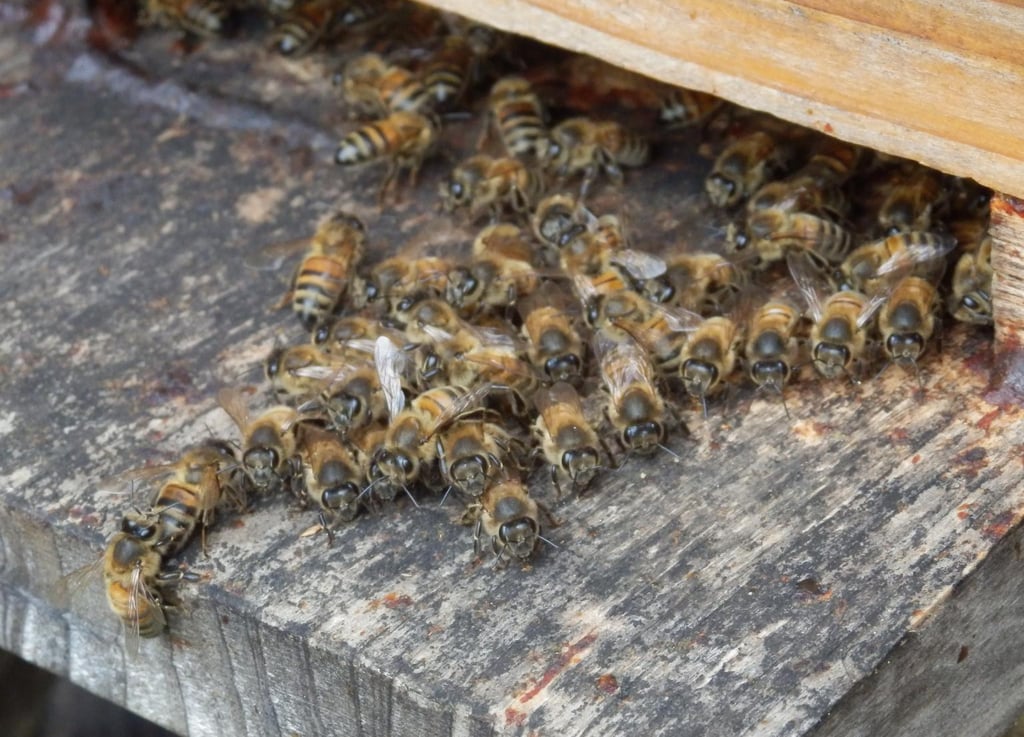Guarding the Hive
Disease Prevention, Treatment Protocols, and Integrated Pest Management


Bee colonies face a range of biological threats—from bacterial infections to parasitic mites. Healthy hives depend on proactive care, early diagnosis, and strategic interventions. For commercial and hobbyist beekeepers alike, mastering disease prevention and treatment ensures strong colonies and sustainable operations.
Common Diseases and Their Symptoms
Understanding disease indicators is critical. Key threats include:
American Foulbrood (AFB): A deadly spore-forming bacterial infection. Look for sunken, perforated brood caps and a foul odor. Requires immediate response and, often, destruction of infected equipment.
European Foulbrood (EFB): A bacterial disease affecting young larvae. Symptoms include twisted larvae and uneven brood patterns. Early treatment can prevent losses.
Nosema: A microsporidian parasite causing dysentery and reduced lifespan. Spot streaked hive entrances and sluggish foragers.
Chalkbrood: Fungal mummification of larvae. Appears as white or gray "chalk" in cells.
Protective inspections using gear from Heliotrope Bee allow for safe, close observation to spot these signs before they escalate.
Parasitic Threats and Their Control
The most destructive pest today is the Varroa destructor mite. These external parasites weaken bees, transmit viruses, and can collapse colonies if unmanaged.
Monitoring and control methods include:
Alcohol wash or sugar roll tests to assess mite loads.
Drone brood removal to break the reproductive cycle.
Oxalic or formic acid treatments, applied with care.
Screened bottom boards for passive mite drop.
Heliotrope Bee’s protective apparel makes it easier to administer chemical or physical treatments without compromising safety during peak mite pressure seasons.
Integrated Pest Management (IPM): A Holistic Approach
IPM is the gold standard for long-term hive health. It combines biological, mechanical, cultural, and chemical strategies to manage pests without over-relying on any one method.
Key principles:
Threshold-based intervention: Act only when pest levels demand it.
Rotation of treatments: Prevent resistance.
Hive genetics: Breed for hygienic behavior that resists disease.
Environmental control: Maintain dry, well-ventilated hives.
Whether managing a single apiary or a commercial fleet, reliable protective gear like ventilated suits and gloves from Heliotrope Bee allow for consistent application of IPM strategies.
Seasonal Planning and Proactive Health Checks
Hive health varies with the seasons:
Spring: Check for winter losses and AFB/EFB symptoms.
Summer: Monitor for mites and treat if thresholds are met.
Fall: Strengthen colonies before winter by managing nosema and reducing mite loads.
Winter: Limit disturbances, but inspect entrances for dysentery signs.
Routine inspections—conducted comfortably in Heliotrope Bee’s ergonomic gear—help detect problems before they spread.
Trustworthy Gear for Sensitive Work
Disease inspections and treatments involve risk. Heliotrope Bee, operating since 2012, provides tailored, high-quality protective wear that supports precise, safe, and confident hive management. Our suits, jackets, and gloves enable you to intervene without harm to bees or yourself.
Contact: sales@heliotropebee.com
Explore gear: www.heliotropebee.com


